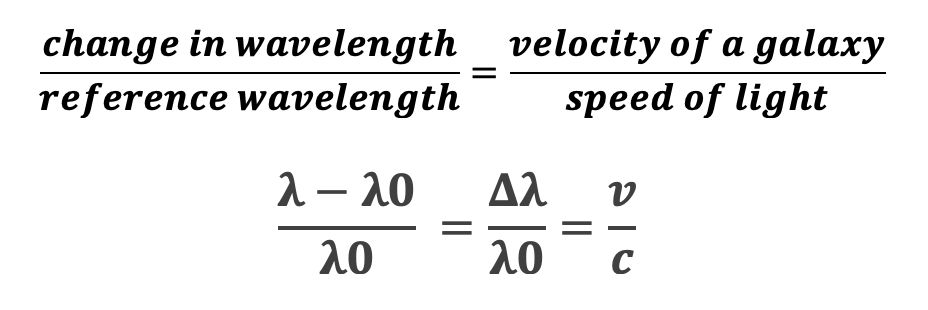Edexcel IGCSE Physics Paper 1 and Paper 2 Analysis: Topics You Need to Know for Each
What are the differences between Edexcel IGCSE Physics Paper 1 and 2, which topic should you choose to focus and which you can skip for each paper, what is the weighted distribution and allocated time and the specific unit to concentrate on.
| Physics Paper 1 | Physics Paper 2 | |
| Code | 4PH1/1P and 4SD0/1P | 4PH1/2P |
| Mark | 110 marks | 70 marks |
| Percentage | 61.10% | 38.90% |
| Time | 2 hours | 1 hour 15 mins |
| Availability | January and June | January and June |
| First Assessment | June 2019 | June 2019 |
| Content | Core Content | All Content |
| Assessment | A combination of different question styles, including multiple-choice questions, short- answer questions, calculations and extended open-response questions. | |
Paper 1 (codes 4PH1/1P and 4SD0/1P) is worth 110 marks, contributes 61.10% to the final grade, and lasts 2 hours. It assesses only the Core Content and features a mix of question styles, including multiple choice, short answers, calculations, and extended open-response questions.
Paper 2 (code 4PH1/2P) is shorter at 1 hour 15 minutes, carries 70 marks, and accounts for 38.90% of the final grade. It covers all content—both Core and Supplementary (content in Bold and carries ‘P’ reference) —and follows the same assessment style as Paper 1.
Now for the content to focus on by Topics.
1 Forces and Motion
Under Forces and Motion for Paper 1, a large chunk of sub-topic (c) Forces, movement, shapes and momentum is left out. That does not mean you can ignore this completely for Paper 1 but place more emphasis on this when tackling Paper 2. Look under the right column in the table below for specific sub-topics and use the Past Year Exam Questions for Forces and Motion to prepare for them. See past questions in Paper 2 and identify the type of questions that will be asked in Paper 2.
| Sub Topics | Physics Paper 1 | Physics Paper 2 |
| (a) Units | 1.1 use the following units: kilogram (kg), metre (m), metre/second (m/s), metre/second2 (m/s2), newton (N), second (s) and newton/kilogram (N/kg) | |
| 1.2P use the following units: newton metre (Nm), kilogram metre/second (kg m/s) | ||
| (b) Movement and Position | 1.3 plot and explain distance−time graphs 1.4 know and use the relationship between average speed, distance moved and time taken: average speed = distance moved/time taken 1.5 practical: investigate the motion of everyday objects such as toy cars or tennis balls 1.6 know and use the relationship between acceleration, change in velocity and time taken: a = (v-u)/t 1.7 plot and explain velocity−time graphs 1.8 determine acceleration from the gradient of a velocity−time graph 1.9 determine the distance travelled from the area between a velocity−time graph and the time axis 1.10 use the relationship between final speed, initial speed, acceleration and distance moved: (final speed)2 = (initial speed)2 + (2 × acceleration × distance moved), v2 =u2 +(2×a×s) | |
| (c) Forces, movement , shape and momentum | 1.11 describe the effects of forces between bodies such as changes in speed, shape or direction 1.12 identify different types of force such as gravitational or electrostatic 1.13 understand how vector quantities differ from scalar quantities 1.14 understand that force is a vector quantity 1.15 calculate the resultant force of forces that act along a line 1.16 know that friction is a force that opposes motion 1.17 know and use the relationship between unbalanced force, mass and acceleration: force = mass × acceleration, F = m x a 1.18 know and use the relationship between weight, mass and gravitational field strength: weight = mass × gravitational field strength, W=m×g 1.19 know that the stopping distance of a vehicle is made up of the sum of the thinking distance and the braking distance 1.20 describe the factors affecting vehicle stopping distance, including speed, mass, road condition and reaction time 1.21 describe the forces acting on falling objects (and explain why falling objects reach a terminal velocity) 1.22 practical: investigate how extension varies with applied force for helical springs, metal wires and rubber bands 1.23 know that the initial linear region of a force-extension graph is associated with Hooke’s law 1.24 describe elastic behaviour as the ability of a material to recover its original shape after the forces causing deformation have been removed | |
| 1.25P know and use the relationship between momentum, mass and velocity: momentum = mass × velocity p=m×v 1.26P use the idea of momentum to explain safety features 1.27P use the conservation of momentum to calculate the mass, velocity or momentum of objects 1.28P use the relationship between force, change in momentum and time taken: force = change in momentum/time taken, F = (mv-mu)/t1.29P demonstrate an understanding of Newton’s third law 1.30P know and use the relationship between the moment of a force and its perpendicular distance from the pivot: moment = force × perpendicular distance from the pivot 1.31P know that the weight of a body acts through its centre of gravity 1.32P use the principle of moments for a simple system of parallel forces acting in one plane 1.33P understand how the upward forces on a light beam, supported at its ends, vary with the position of a heavy object placed on the beam | ||
2 Electricity
For this section, it is more clear cut as to what will be asked or not asked. In Paper 1, you can safely place less focus on all of (d) Electric Charge sub-topic if pressed for time. Of course, we would encourage you to revise for this but make sure you put in the effort for Paper 2 as this is likely to come up. See Past Year Exam Questions for Electricity and look under Paper 2P and 2PR to familiarise yourself with the type of questions that can be asked for this sub-topic.
| Sub Topics | Physics Paper 1 | Physics Paper 2 |
| (a) Units | 2.1 use the following units: ampere (A), coulomb (C), joule (J), ohm (Ω), second (s), volt (V) and watt (W) | |
| (b) Mains electricity | 2.2 understand how the use of insulation, double insulation, earthing, fuses and circuit breakers protects the device or user in a range of domestic appliances 2.3 understand why a current in a resistor results in the electrical transfer of energy and an increase in temperature, and how this can be used in a variety of domestic contexts 2.4 know and use the relationship between power, current and voltage: power = current × voltage, P=I×V and apply the relationship to the selection of appropriate fuses 2.5 use the relationship between energy transferred, current, voltage and time: energy transferred = current × voltage × time, E = I × V x t 2.6 know the difference between mains electricity being alternating current (a.c.) and direct current (d.c.) being supplied by a cell or battery | |
| (c) Energy and voltage in circuits | 2.7 explain why a series or parallel circuit is more appropriate for particular applications, including domestic lighting 2.8 understand how the current in a series circuit depends on the applied voltage and the number and nature of other components 2.9 describe how current varies with voltage in wires, resistors, metal filament lamps and diodes, and how to investigate this experimentally 2.10 describe the qualitative effect of changing resistance on the current in a circuit 2.11 describe the qualitative variation of resistance of light-dependent resistors (LDRs) with illumination and thermistors with temperature 2.12 know that lamps and LEDs can be used to indicate the presence of a current in a circuit 2.13 know and use the relationship between voltage, current and resistance: voltage = current × resistance, V=I×R 2.14 know that current is the rate of flow of charge 2.15 know and use the relationship between charge, current and time: charge = current × time, Q=I×t 2.16 know that electric current in solid metallic conductors is a flow of negatively charged electrons 2.17 understand why current is conserved at a junction in a circuit 2.18 know that the voltage across two components connected in parallel is the same 2.19 calculate the currents, voltages and resistances of two resistive components connected in a series circuit 2.20 know that:
2.21 know and use the relationship between energy transferred, charge and voltage: energy transferred = charge × voltage, E=Q×V | |
| (d) Electric Charge | 2.22P identify common materials that are electrical conductors or insulators, including metals and plastics 2.23P practical: investigate how insulating materials can be charged by friction 2.24P explain how positive and negative electrostatic charges are produced on materials by the loss and gain of electrons 2.25P know that there are forces of attraction between unlike charges and forces of repulsion between like charges 2.26P explain electrostatic phenomena in terms of the movement of electrons 2.27P explain the potential dangers of electrostatic charges, e.g. when fuelling aircraft and tankers 2.28P explain some uses of electrostatic charges, e.g. in photocopiers and inkjet printers | |
3 Waves
For this section, the sub-topics that you need to pay more attention to for Paper 2 is the sub-topic of Light and sound in particular sound (see bottom of table below). See Past Exam Questions for Waves 2019-20 and Waves 2021-22 for the type of questions you can be asked.
| Sub Topics | Physics Paper 1 | Physics Paper 2 |
| (a) Units | 3.1 use the following units: degree (°), hertz (Hz), metre (m), metre/second (m/s) and second (s) | |
| (b) Properties of waves | 3.2 explain the difference between longitudinal and transverse waves 3.3 know the definitions of amplitude, wavefront, frequency, wavelength and period of a wave 3.4 know that waves transfer energy and information without transferring matter 3.5 know and use the relationship between the speed, frequency and wavelength of a wave: wave speed = frequency × wavelength v=f×λ 3.6 use the relationship between frequency and time period: frequency = 1/time period, f=1/T 3.7 use the above relationships in different contexts, including sound waves and electromagnetic waves 3.8 explain why there is a change in the observed frequency and wavelength of a wave when its source is moving relative to an observer and that this is known as the Doppler effect 3.9 explain that all waves can be reflected and refracted | |
| (c) The electromagnetic spectrum | 3.10 know that light is part of a continuous electromagnetic spectrum that includes radio, microwave, infrared, visible, ultraviolet, x-ray and gamma ray radiations, and that all these waves travel at the same speed in free space 3.11 know the order of the electromagnetic spectrum in terms of decreasing wavelength and increasing frequency, including the colours of the visible spectrum 3.12 explain some of the uses of electromagnetic radiations, including:
3.13 explain the detrimental effects of excessive exposure of the human body to electromagnetic waves, including:
and describe simple protective measures against the risks | |
| (d) Light and sound | 3.14 know that light waves are transverse waves and that they can be reflected and refracted 3.15 use the law of reflection (the angle of incidence equals the angle of reflection) 3.16 draw ray diagrams to illustrate reflection and refraction 3.17 practical: investigate the refraction of light, using rectangular blocks, semi-circular blocks and triangular prisms 3.18 know and use the relationship between refractive index, angle of incidence and angle of refraction: n = sin i / sin r 3.19 practical: investigate the refractive index of glass, using a glass block 3.20 describe the role of total internal reflection in transmitting information along optical fibres and in prisms 3.21 explain the meaning of critical angle c 3.22 know and use the relationship between critical angle and refractive index: sin c = 1 / n 3.23 know that sound waves are longitudinal waves that can be reflected and refracted | |
| 3.24P know that the frequency range for human hearing is 20–20 000 Hz 3.25P practical: investigate the speed of sound in air 3.26P understand how an oscilloscope and microphone can be used to display a sound wave 3.27P practical: investigate the frequency of a sound wave using an oscilloscope 3.28P understand how the pitch of a sound relates to the frequency of vibration of the source 3.29P understand how the loudness of a sound relates to the amplitude of vibration of the source | ||
4 Energy resources and energy transfers
For this section, it is again more clear cut. You can place less emphasis on sub-topic (d) Energy resources and electricity generation for Paper 1 but make sure you cover this for Paper 2. See Past Exam Questions for Energy resources and energy transfers 2019 – 20 and 2021 – 22. This section covers energy transfers in electricity generation and advantages and disadvantages of electricity production from renewable and non-renewable resources.
| Sub Topics | Physics Paper 1 | Physics Paper 2 |
| (a) Units | 4.1 use the following units: kilogram (kg), joule (J), metre (m), metre/second (m/s), metre/second2 (m/s2), newton (N), second (s) and watt (W) | |
| (b) Energy Transfers | 4.2 describe energy transfers involving energy stores: energy stores: chemical, kinetic, gravitational, elastic, thermal, magnetic, electrostatic, nuclear energy transfers: mechanically, electrically, by heating, by radiation (light and sound) 4.3 use the principle of conservation of energy 4.4 know and use the relationship between efficiency, useful energy output and total energy output: efficiency = useful energy output/total energy output x 100% 4.5 describe a variety of everyday and scientific devices and situations, explaining the transfer of the input energy in terms of the above relationship, including their representation by Sankey diagrams 4.6 describe how thermal energy transfer may take place by conduction, convection and radiation 4.7 explain the role of convection in everyday phenomena 4.8 explain how emission and absorption of radiation are related to surface and temperature 4.9 practical: investigate thermal energy transfer by conduction, convection and radiation 4.10 explain ways of reducing unwanted energy transfer, such as insulation | |
| (c) Work and power | 4.11 know and use the relationship between work done, force and distance moved in the direction of the force: work done = force × distance moved, W=F×d 4.12 know that work done is equal to energy transferred 4.13 know and use the relationship between gravitational potential energy, mass, gravitational field strength and height: gravitational potential energy = mass × gravitational field strength × height GPE = m × g × h 4.14 know and use the relationship: kinetic energy = 12 × mass × speed2 KE = ½ x m x v2 4.15 understand how conservation of energy produces a link between gravitational potential energy, kinetic energy and work 4.16 describe power as the rate of transfer of energy or the rate of doing work 4.17 use the relationship between power, work done (energy transferred) and time taken: power = work done / time taken, P = W/t | |
| (d) Energy resources and electricity generation | 4.18P describe the energy transfers involved in generating electricity using:
4.19P describe the advantages and disadvantages of methods of large-scale electricity production from various renewable and non-renewable resources | |
5 Solids, liquids and gases
We love it when it is clear cut. For Paper 1, you can study but put aside sub-topic (c) Change of state. However, you mustn’t ignore this for Paper 2 as you can see from the Past Exam Questions for Solids, liquids and gases.
| Sub Topics | Physics Paper 1 | Physics Paper 2 |
| (a) Units | 5.1 use the following units: degree Celsius (°C), Kelvin (K), joule (J), kilogram (kg), kilogram/metre3 (kg/m3), metre (m), metre2 (m2), metre3 (m3), metre/second (m/s), metre/second2 (m/s2), newton (N) and pascal (Pa) | |
| 5.2P use the following unit: joules/kilogram degree Celsius (J/kg °C) | ||
| (b) Density and pressure | 5.3 know and use the relationship between density, mass and volume: density = mass/volume, ρ =m/V 5.4 practical: investigate density using direct measurements of mass and volume 5.5 know and use the relationship between pressure, force and area: pressure = force/area, p=F/A 5.6 understand how the pressure at a point in a gas or liquid at rest acts equally in all directions 5.7 know and use the relationship for pressure difference: | |
| (c) Change of state | 5.8P explain why heating a system will change the energy stored within the system and raise its temperature or produce changes of state 5.9P describe the changes that occur when a solid melts to form a liquid, and when a liquid evaporates or boils to form a gas 5.10P describe the arrangement and motion of particles in solids, liquids and gases 5.11P practical: obtain a temperature–time graph to show the constant temperature during a change of state 5.12P know that specific heat capacity is the energy required to change the temperature of an object by one degree Celsius per kilogram of mass (J/kg °C) 5.13P use the equation: change in thermal energy = mass × specific heat capacity × change in temperature ΔQ = m × c × ΔT 5.14P practical: investigate the specific heat capacity of materials including water and some solids | |
| (d) Ideal gas molecules | 5.15 explain how molecules in a gas have random motion and that they exert a force, and hence a pressure, on the walls of a container 5.16 understand why there is an absolute zero of temperature, which is –273 °C 5.17 describe the Kelvin scale of temperature and be able to convert between the Kelvin and Celsius scales 5.18 understand why an increase in temperature results in an increase in the average speed of gas molecules 5.19 know that the Kelvin temperature of a gas is proportional to the average kinetic energy of its molecules 5.20 explain, for a fixed amount of gas, the qualitative relationship between:
5.21 use the relationship between the pressure and Kelvin temperature of a fixed mass of gas at constant volume: p1/T1 = p2/T2 5.22 use the relationship between the pressure and volume of a fixed mass of gas at constant temperature: p1V1=p2V2 | |
6 Magnetism and electromagnetism
For Paper 1, you can leave out the part about Transformers and save this for Paper 2 if you are short for time. Preparing for Paper 2 requires you to spend a bit more time on (c) Electromagnetism in particular knowing how to draw magnetic field patterns and force on charged particles when moving in a magnetic field. You also need to learn about transformers, turns and efficiency calculations and under (d) Electromagnetic Induction. Practice magnetic field and transformers past exam questions in Magnetism and electromagnetism 2019 – 20 and 2021 – 2022.
| Sub Topics | Physics Paper 1 | Physics Paper 2 |
| (a) Units | 6.1 use the following units: ampere (A), volt (V) and watt (W) | |
| (b) Magnetism | 6.2 know that magnets repel and attract other magnets and attract magnetic substances 6.3 describe the properties of magnetically hard and soft materials 6.4 understand the term ‘magnetic field line’ 6.5 know that magnetism is induced in some materials when they are placed in a magnetic field 6.6 practical: investigate the magnetic field pattern for a permanent bar magnet and between two bar magnets 6.7 describe how to use two permanent magnets to produce a uniform magnetic field pattern | |
| (c) Electromagnetism | 6.8 know that an electric current in a conductor produces a magnetic field around it | |
| 6.9P describe the construction of electromagnets 6.10P draw magnetic field patterns for a straight wire, a flat circular coil and a solenoid when each is carrying a current 6.11P know that there is a force on a charged particle when it moves in a magnetic field as long as its motion is not parallel to the field | ||
| 6.12 understand why a force is exerted on a current-carrying wire in a magnetic field and how this effect is applied in simple d.c. electric motors and loudspeakers 6.13 use the left-hand rule to predict the direction of the resulting force when a wire carries a current perpendicular to a magnetic field 6.14 describe how the force on a current-carrying conductor in a magnetic field changes with the magnitude and direction of the field and current | ||
| (d) Electromagnetic Induction | 6.15 know that a voltage is induced in a conductor or a coil when it moves through a magnetic field or when a magnetic field changes through it and describe the factors that affect the size of the induced voltage 6.16 describe the generation of electricity by the rotation of a magnet within a coil of wire and of a coil of wire within a magnetic field, and describe the factors that affect the size of the induced voltage | |
| 6.17P describe the structure of a transformer and understand that a transformer changes the size of an alternating voltage by having different numbers of turns on the input and output sides 6.18P explain the use of step-up and step-down transformers in the large-scale generation and transmission of electrical energy 6.19P know and use the relationship between input (primary) and output (secondary) voltages and the turns ratio for a transformer: Input (primary) voltage/output (secondary) voltage = primary turns/secondary turns 6.20P know and use the relationship: input power = output power Vp Ip =Vs Is for 100% efficiency | ||
7 Radioactivity and particles
There are no differentiations between the sub topics for this section, you will just need to know everything for both papers. However, look at Past Exam Questions for Radioactivity and Particles for the type of questions that can be asked.
| Sub Topics | Physics Paper 1 | Physics Paper 2 |
| (a) Units | 7.1 use the following units: becquerel (Bq), centimetre (cm), hour (h), minute (min) and second (s) | |
| (b) Radioactivity | 7.2 describe the structure of an atom in terms of protons, neutrons and electrons and use symbols such as to describe particular nuclei 7.3 know the terms atomic (proton) number, mass (nucleon) number and isotope 7.4 know that alpha (α) particles, beta (β−) particles, and gamma (γ) rays are ionising radiations emitted from unstable nuclei in a random process 7.5 describe the nature of alpha (α) particles, beta (β−) particles and gamma (γ) rays, and recall that they may be distinguished in terms of penetrating power and ability to ionise 7.6 practical: investigate the penetration powers of different types of radiation using either radioactive sources or simulations 7.7 describe the effects on the atomic and mass numbers of a nucleus of the emission of each of the four main types of radiation (alpha, beta, gamma and neutron radiation) 7.8 understand how to balance nuclear equations in terms of mass and charge 7.9 know that photographic film or a Geiger−Müller detector can detect ionising radiations 7.10 explain the sources of background (ionising) radiation from Earth and space 7.11 know that the activity of a radioactive source decreases over a period of time and is measured in becquerels 7.12 know the definition of the term ‘half-life’ and understand that it is different for different radioactive isotopes 7.13 use the concept of the half-life to carry out simple calculations on activity, including graphical methods 7.14 describe uses of radioactivity in industry and medicine 7.15 describe the difference between contamination and irradiation 7.16 describe the dangers of ionising radiations, including:
| |
| (c) Fission and fusion | 7.17 know that nuclear reactions, including fission, fusion and radioactive decay, can be a source of energy 7.18 understand how a nucleus of U-235 can be split (the process of fission) by collision with a neutron and that this process releases energy as kinetic energy of the fission products 7.19 know that the fission of U-235 produces two radioactive daughter nuclei and a small number of neutrons 7.20 describe how a chain reaction can be set up if the neutrons produced by one fission strike other U-235 nuclei 7.21 describe the role played by the control rods and moderator in the fission process 7.22 understand the role of shielding around a nuclear reactor 7.23 explain the difference between nuclear fusion and nuclear fission 7.24 describe nuclear fusion as the creation of larger nuclei resulting in a loss of mass from smaller nuclei, accompanied by a release of energy 7.25 know that fusion is the energy source for stars 7.26 explain why nuclear fusion does not happen at low temperatures and pressures, due to electrostatic repulsion of protons | |
8 Astrophysics
For Paper 2, revise brightness of star using absolute magnitude and draw the Hertzsprung-Russell diagram (HR diagram) in the sub-topic (c) Stellar evolution, and the complete sub-topic on Cosmology in particular the Big Bang theory and evidence that supports the Big Bang (red shift and cosmic microwave background), light received from different galaxies and distance from Earth and evidence of expansion. Also consider the observed frequency and wavelength on between wave source and observer as well as equation relating to change of wavelength and velocity of galaxy, see table below. See Past Year Exam Question for Astrophysics.
| Sub Topics | Physics Paper 1 | Physics Paper 2 |
| (a) Units | 8.1 use the following units: kilogram (kg), metre (m), metre/second (m/s), metre/second2 (m/s2), newton (N), second (s), newton/kilogram (N/kg) | |
| (b) Motion in the universe | 8.2 know that:
8.3 understand why gravitational field strength, g, varies and know that it is different on other planets and the Moon from that on the Earth 8.4 explain that gravitational force:
8.5 describe the differences in the orbits of comets, moons and planets 8.6 use the relationship between orbital speed, orbital radius and time period: orbital speed = ( 2 x p x orbital radius ) / time period | |
| (c) Stellar evolution
| 8.7 understand how stars can be classified according to their colour 8.8 know that a star’s colour is related to its surface temperature 8.9 describe the evolution of stars of similar mass to the Sun through the following stages:
8.10 describe the evolution of stars with a mass larger than the Sun | |
| 8.11P understand how the brightness of a star at a standard distance can be represented using absolute magnitude 8.12P draw the main components of the Hertzsprung–Russell diagram (HR diagram) | ||
| (d) Cosmology | 8.13P describe the past evolution of the universe and the main arguments in favour of the Big Bang theory 8.14P describe evidence that supports the Big Bang theory (red-shift and cosmic microwave background – CMB – radiation) 8.15P describe that if a wave source is moving relative to an observer, there will be a change in the observed frequency and wavelength 8.16P use the equation relating to change in wavelength, reference wavelength, velocity of a galaxy and the speed of light: Change in wavelength/reference wavelength = velocity of a galaxy/speed of light 
8.17P describe the red-shift in light received from galaxies at different distances away from the Earth 8.18P explain why the red-shift of galaxies provides evidence for the expansion of the universe | |









